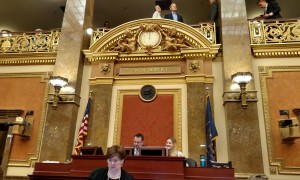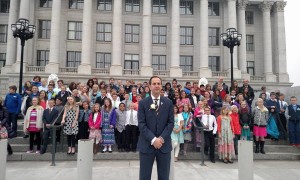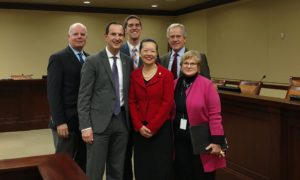Have you stopped to wonder whether the coverage gap came from? Was it always here or did it suddenly appear? You may have heard some of my House Republican colleagues say that Obamacare created the Coverage Gap and wondered how that could possibly be the case.
When we say that the coverage gap was created by Obamacare we really mean it. Here is a little Utah insurance market history to clarify where the gap came from.
Before Obamacare became law in 2010, low income Utahns could buy inexpensive individual insurance policies on the open market, but they had to buy in while they were still healthy and continue to pay their premiums. Otherwise, it really wouldn’t be insurance, would it?
Those who had waited to buy insurance until they were sick were rightfully excluded from participating in the market, but they did have an option. They could buy in to HIPUtah, Utah’s “high risk pool.” This arrangement allowed them to join in by paying a higher price, which seems fair given that they hadn’t paid in while they were healthy, and protected the insurance market from moral hazard and higher premiums.
Of course, premiums in the high risk pool were higher than the regular market, but not as much as you would think. State tax funds were used to subsidize the premiums with the net result that premiums averaged about 25-50% higher than the market.
Furthermore, HIPUtah received millions in federal grants each year that were dedicated to low income populations to help keep the premiums affordable. In fact, when HIPUtah combined the state subsidies with the federal grants, the net premiums for people under 100% FPL were often lower than the regular market price.
Sounds like a pretty good deal, right? But that’s not all. It was fairly common for health care providers, churches and other charitable organizations to chip in to help cover premiums for people with immediate needs.
It was not uncommon to see an enrollment form come in with a check from a hospital for the first month’s premium. And that makes sense, too. A hospital system would much rather pay a couple months of insurance premiums to keep someone insured than provide uncompensated care.
So there was no real gap as a combination of private and public resources came together to take care of the most needy. Not that this was a perfect system, but it worked for Utah. It kept premiums in the market place low because people couldn’t sit out while they were healthy and jump in at the last minute when they wanted someone else to pay for needed care. It also provided a fair and affordable option for everyone that wanted insurance. Low income people, healthy or sick could find affordable insurance options.
But Obamacare did away with this Utah-grown system. Federally mandated community rating and guaranteed issue replaced the risk adjusted market (and premiums are still soaring). Federal grants were ended in order to fund other ACA priorities and ultimately HIPUtah was phased out. The last insured person’s coverage ended about a year ago.
If the truth were told, it was Obamacare that took away opportunities for low income people to take care of themselves, creating the coverage gap with no realistic, sustainable plan for providing an alternative for low income adults.
We did not create the gap. The ACA created it and provided no sustainable solution to cover it.
Next Up: Rep. Thurston talks about options for helping the most vulnerable among us without breaking the state budget



